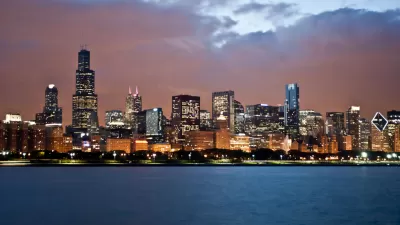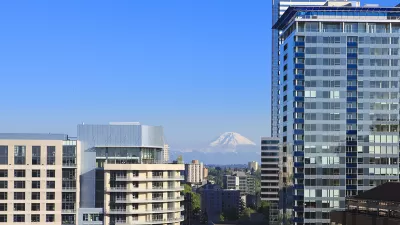For a variety of economic reasons in addition to urban preferences, young people are not leaving the country's three major metropolitan areas: New York, Los Angeles, and Chicago, and that's not good for the nation's economy nor the individuals.

"For decades, young people flocked to the U.S.’s three biggest metro areas to build careers before taking their talent and spending power elsewhere to raise families," writes Neil Shah who covers the U.S. economy and demographics from The Wall Street Journal's New York office. "That pattern now appears to be fading as more young workers stay put."
Young adults who moved to the three cities for school, internships or early jobs—or simply because it seemed cool—may now be stuck, said William Frey, a demographer at the Brookings Institution.
The findings (see chart) are based on an analysis of census data by the Brookings Institution and The Wall Street Journal.
From 2004 to 2007, before the recession, an average of about 50,000 adults aged 25 to 34 left both the New York and Los Angeles metro areas annually, after accounting for new arrivals.
Fewer than 23,000 young adults left New York annually between 2010 and 2013. Only about 12,000 left Los Angeles—a drop of nearly 80% from before the recession. Chicago’s departures dropped about 60%.
The findings might seem counter-intuitive considering the higher cost of living, particularly in housing, in major urban areas. Indeed, that was shown to be the case in a 2013 post about increased out-migration from Toronto and San Francisco, although it was not age-specific. Similarly, an August post shows that affordable cities are the fastest growing ones.
No one reason is attributed to the diminished urban out-migration of young people from New York, Los Angeles, and Chicago.
Increased financial insecurity may play a role, especially for young people shouldering big student debts. ..
In tough times, finding well-paying jobs may be easier in big cities, offsetting their relatively high costs of living.
"Some Americans are actively choosing big-city life," writes Shah. "The urban cores of metropolitan areas are growing slightly faster in percentage terms than their suburbs, though many more Americans still move to the suburbs from cities than the other way around."
Migration also helps distribute human capital and economic demand more widely, demographers contend, allowing states with weaker economies to benefit from those with stronger ones.
FULL STORY: More Young Adults Stay Put in Biggest Cities

Planetizen Federal Action Tracker
A weekly monitor of how Trump’s orders and actions are impacting planners and planning in America.

Congressman Proposes Bill to Rename DC Metro “Trump Train”
The Make Autorail Great Again Act would withhold federal funding to the system until the Washington Metropolitan Area Transit Authority (WMATA), rebrands as the Washington Metropolitan Authority for Greater Access (WMAGA).

The Simple Legislative Tool Transforming Vacant Downtowns
In California, Michigan and Georgia, an easy win is bringing dollars — and delight — back to city centers.

The States Losing Rural Delivery Rooms at an Alarming Pace
In some states, as few as 9% of rural hospitals still deliver babies. As a result, rising pre-term births, no adequate pre-term care and "harrowing" close calls are a growing reality.

The Small South Asian Republic Going all in on EVs
Thanks to one simple policy change less than five years ago, 65% of new cars in this Himalayan country are now electric.

DC Backpedals on Bike Lane Protection, Swaps Barriers for Paint
Citing aesthetic concerns, the city is removing the concrete barriers and flexposts that once separated Arizona Avenue cyclists from motor vehicles.
Urban Design for Planners 1: Software Tools
This six-course series explores essential urban design concepts using open source software and equips planners with the tools they need to participate fully in the urban design process.
Planning for Universal Design
Learn the tools for implementing Universal Design in planning regulations.
Smith Gee Studio
City of Charlotte
City of Camden Redevelopment Agency
City of Astoria
Transportation Research & Education Center (TREC) at Portland State University
US High Speed Rail Association
City of Camden Redevelopment Agency
Municipality of Princeton (NJ)





























